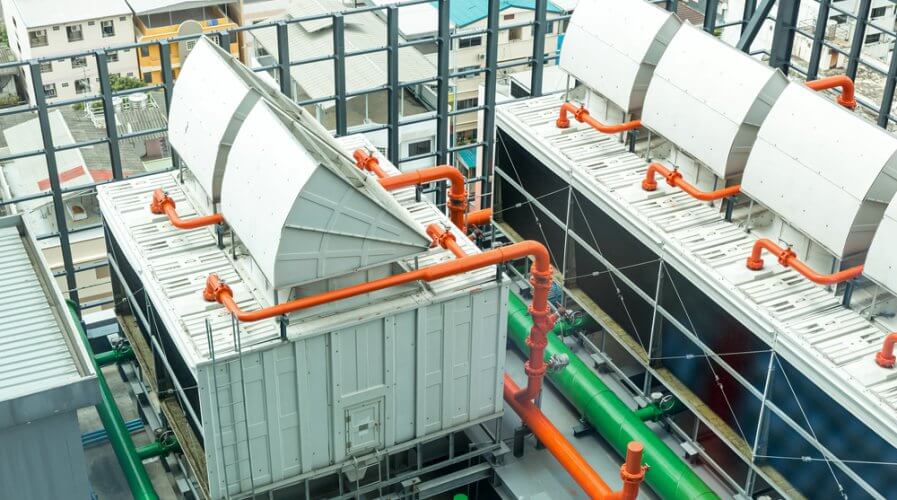
Chilling station at a data center. Source: Shutterstock
Is the cloud creating a water problem for Asia?
WHEN you think of moving your operations to the cloud, you think of going light on assets and therefore on energy consumption — but that can be quite far from the truth.
The cloud, built on data centers, consumes a lot of water to operate at optimum levels, all year round.
According to a study titled The Water Footprint of Data Centers by the Center for Environmental Policy, Imperial College London, the water footprint of data centers has been neglected so far, but it’s time we start paying attention.
Other studies found that a typical (15MW) data center uses 360,000 gallons of water per day (half the water in an Olympic-size swimming pool). According to CloudScene, there are 990 data centers in the Asia Pacific region, which means the region uses 356.4 million gallons (1383.2 million liters) of water to support them.
That’s a lot of water, especially for a region that the United Nations believes is suffering from a silent (water) crisis. Its research suggests that nearly 1.7 billion people in the Asia Pacific region do not have access to improved drinking water and sanitation.
To better understand the problem (and solution), Tech Wire Asia caught up with Ecolab VP & MD – Thailand, Indochina, and Philippines Chen Kah Min at the CloudExpo Asia 2018 summit in Singapore.
“Asia is a growing data hub and IT in this part of the world is accelerating faster than in any other region, but people need to be aware of their water footprint and be held accountable for how they’re using one of the world’s most important natural resources,” explained Chen.
“Since people in Asia are surrounded by water on all sides, they think there’s an abundance of water — but that’s not true. Water scarcity is a real problem in certain parts of the world such as California and Melbourne. By 2030, demand will exceed supply by 40 percent,” said a concerned Chen.
Ecolab, a company that’s got an eye on the growing water problem for almost a hundred years now has developed a tool in partnership with Microsoft and Trucost called the Water Risk Monetizer.
It’s a financial modeling tool that provides a new way for businesses to factor water scarcity into decisions that support business growth and help ensure the availability of fresh water for future generations.
“The Water Risk Monetizer helps companies understand the impact of declining water quantity and quality and provides actionable information that helps them turn water risk into business strategies that enables growth,” explained Chen.
Coming back to data centers, despite the research, it’s not easy to see why water-cooled data centers are a cause for concern.
“It’s because water isn’t used efficiently — the water quality is poor, it causes scales to form in the tubes, which further deteriorates the water quality, ultimately causing more damage than necessary,” said Chen. Instead, companies must think about reusing, recycling, and automating water-processes in order to reduce the water footprint.
Truth be told, several companies are thinking about the energy consumption of the Power Usage Effectiveness (PUE) of their data centers but not its water footprint or the Water Usage Effectiveness (WUE).
In order to be sustainable and support the growing needs of the region, there must be equal focus on PUE and WUE. “It’s time businesses paid attention to their water consumption — their consciousness is all that is needed to encourage proactive steps in this area,” concluded a hopeful Chen.
READ MORE
- The threat of fraud networks in the APAC: KYC and beyond
- Next-gen CX is based on customer communication management systems.
- Enhancing Business Agility with SASE: Insights for CIOs in APAC
- 3 Steps to Successfully Automate Copilot for Microsoft 365 Implementation
- Trustworthy AI – the Promise of Enterprise-Friendly Generative Machine Learning with Dell and NVIDIA




